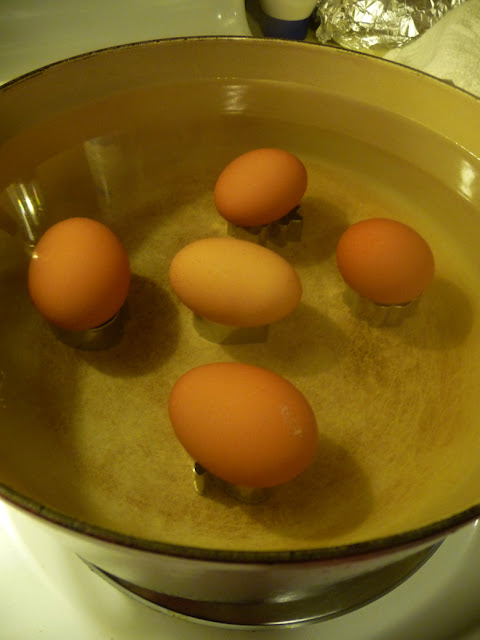No knead bread started out as a recipe that the New York Times published in 2006. It got a lot of attention for being a great bread to make at home with almost no work necessary on the part of the baker. A couple years later, Cook's Illustrated decided to try to refine the recipe, and they released their version in January 2008. They found that even a minimal amount of kneading led to better texture in the bread, and they also introduced a technique of baking the bread in this kind of 'sling' of parchment paper, which is just incredibly smart considering you would otherwise have to stick your hands in a pot that has been baking at 500º for a while.
I feel like this almost no-knead bread is a blog staple, but it's for good cause. I've never had bread this good made at home - the crumb on the inside is light and airy, and it gets crusty on the outside like a professionally baked loaf. It's also incredibly easy to make, you just need to plan for it a day in advance.
Cook's Illustrated Almost No-Knead Bread
(first published by http://www.cooksillustrated.com/, Jan 2008 issue)
3 cups unbleached all-purpose flour (15 ounces), plus additional for dusting work surface
1/4 teaspoon instant or rapid-rise yeast
1 1/2 teaspoons table salt
3/4 cup plus 2 tablespoons water (7 ounces), at room temperature
1/4 cup plus 2 tablespoons mild-flavored lager (3 ounces) (I used Carolina Pale Ale)
1 tablespoon white vinegar
Start by mixing the flour, yeast, and salt together in a large mixing bowl. Add water, beer, and vinegar and use a rubber spatula to mix all ingredients into a shaggy mixture.
Cover the mixing bowl with plastic wrap and place a towel on top of it. Keep this in a warm spot in your kitchen for 8-18 hours to let rise. Line a skillet with a 12"x18" sheet of parchment paper that has been sprayed with nonstick cooking spray. Turn out your dough onto a floured surface and knead 10-15 times. Pull the edges of the dough underneath to make a neat looking ball and place that on the parchment lining the skillet. Cover loosely with plastic wrap and allow to rise for approximately 2 hours. 30 minutes before baking, preheat the oven to 500º with a covered dutch oven or heavy pot inside.
Just before baking, dust the top of the bread with flour and make scores about ½" deep with a sharp knife. I usually do an X pattern (if you're not now you never were!) but it really couldn't matter less. Take the dutch oven out of the oven carefully and take the lid off. Pick up the dough from the edges of the parchment, like a little bread hammock, and lower it into the dutch oven. Place the lid on top and put it back into the oven. Reduce the oven heat to 425º. Bake with the lid on for 30 minutes. Remove the lid and continue baking until the bread reaches 210º, about 30 minutes more. Remove the pot from the oven and use your sling to pull the bread out of the pot. Allow to rest for 2 hours on a cooling rack.
One of the really interesting things about this recipe is the baking covered / baking uncovered step. In professional bakeries, they will often use steam to produce a crusty exterior. Obviously home ovens do not have the ability to inject steam into the oven during the baking process, but by baking inside of the dutch oven, the dough emits its own steam during baking. Keeping the steam enclosed in such a small area emulates the steam injection process, giving us the crusty exterior. What an ingenious and important step. Now we know, and knowing's half the battle.























